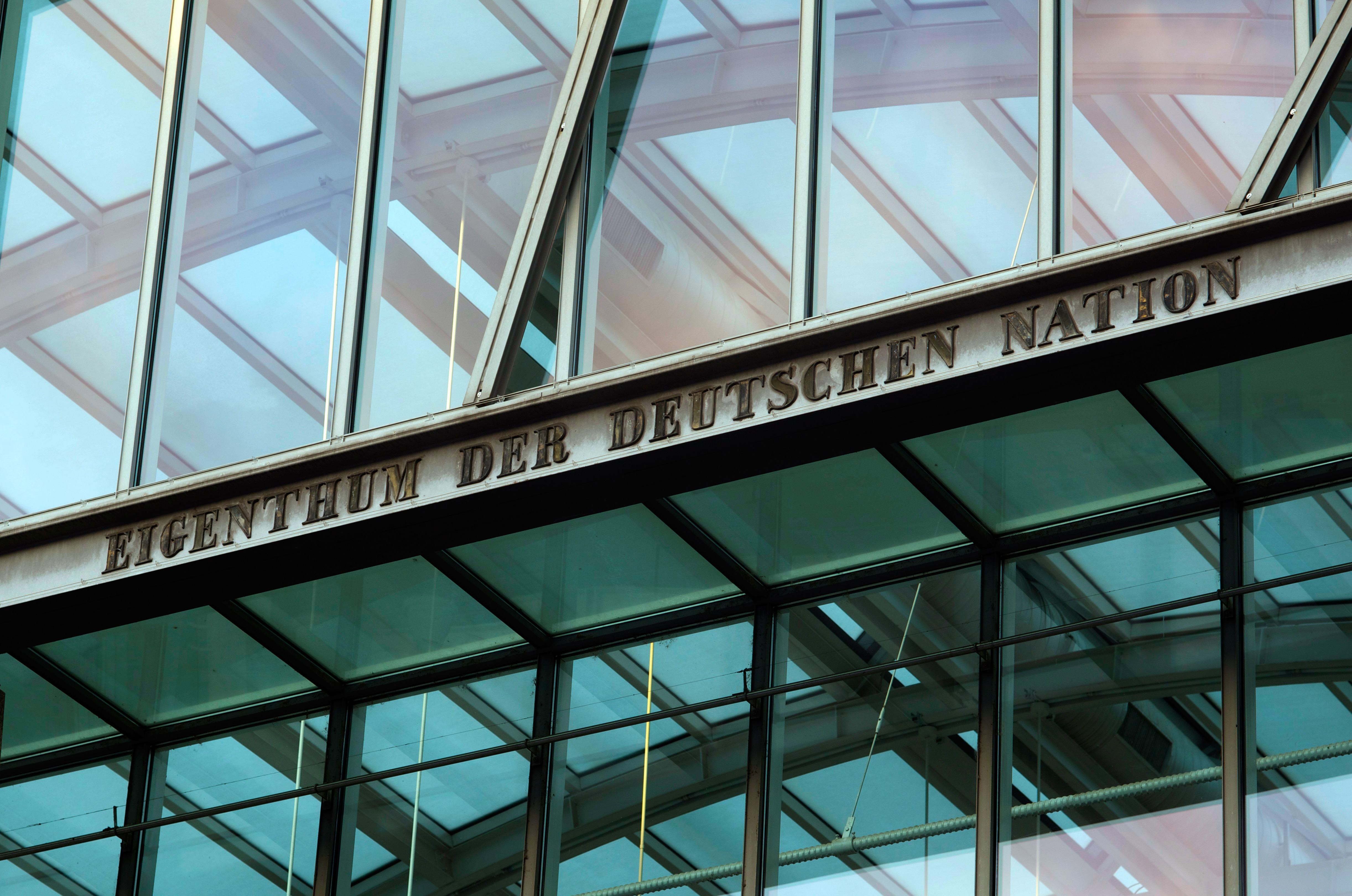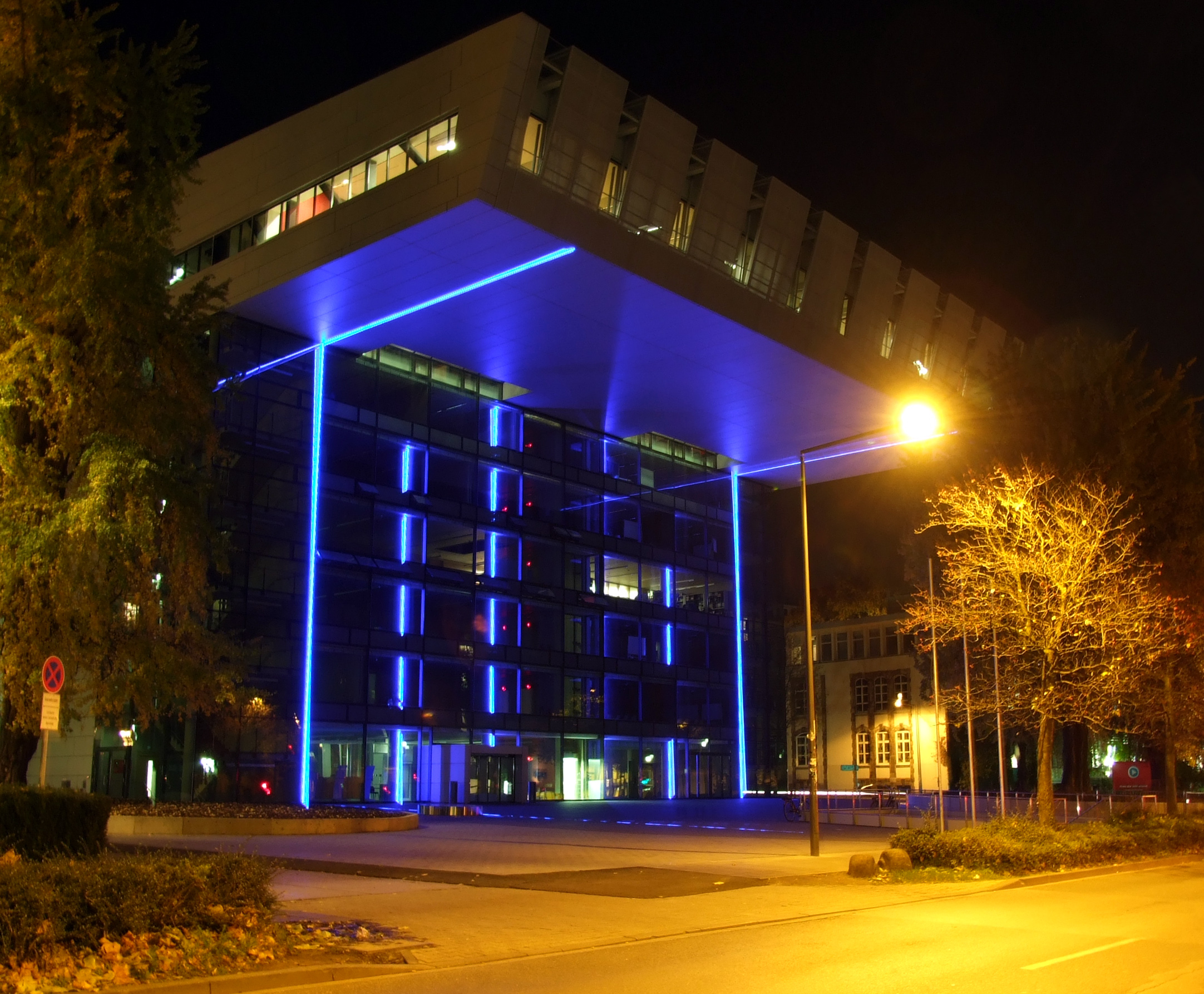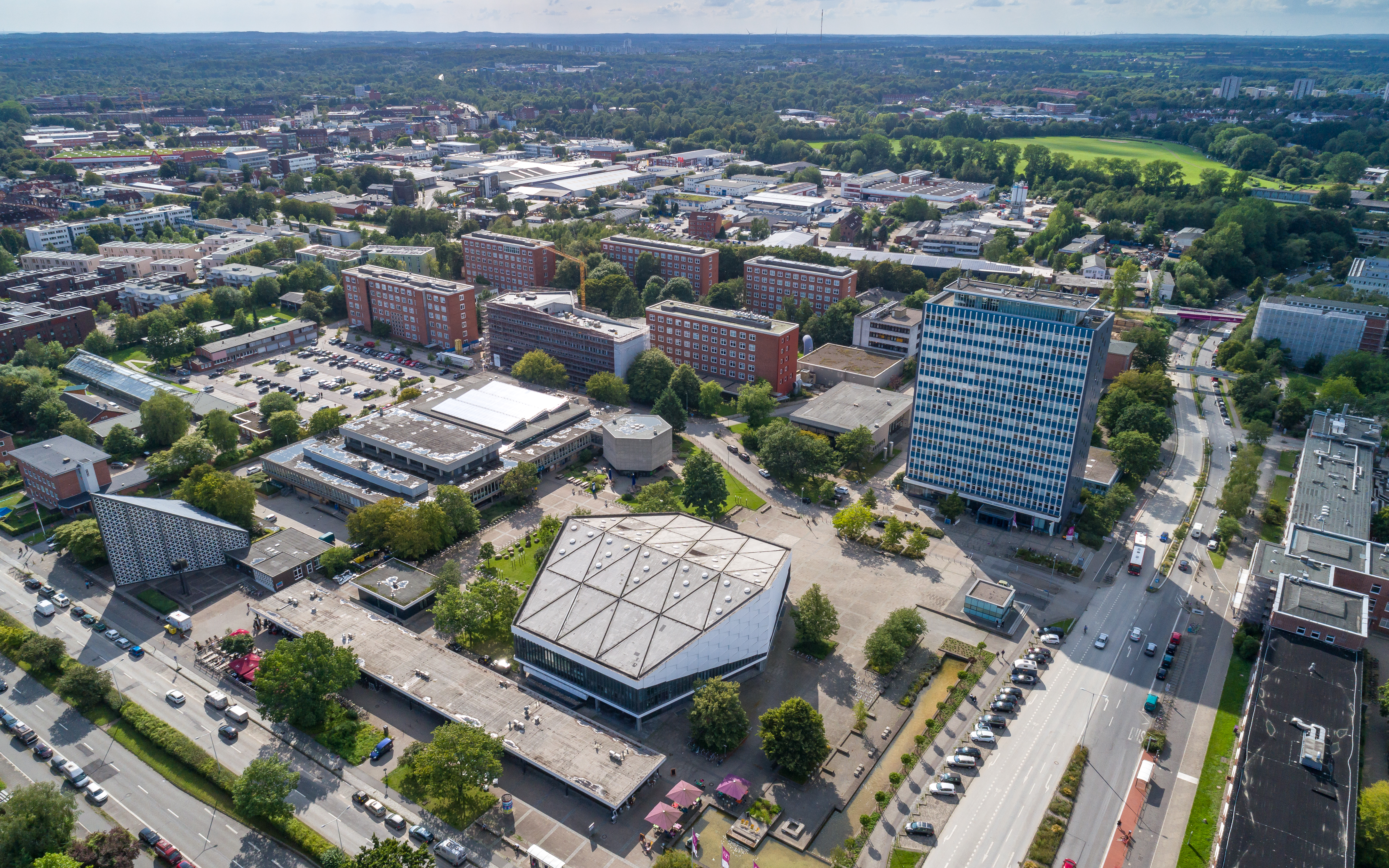|
Christian Rohlfs
Christian Rohlfs (November 22, 1849 – January 8, 1938) was a German painter and printmaker, one of the important representatives of German expressionism. Early life and education He was born in Groß Niendorf, Kreis Segeberg in Prussia. He took up painting as a teenager while convalescing from an infection that was eventually to lead to the amputation of a leg in 1874. He began his formal artistic education in Berlin, before transferring, in 1870, to the Weimar Academy. Professional career In 1901 Rohlfs left Weimar for Hagen, where through the architect Henri van der Velde got to know the art collector Karl Ernst Osthaus who offered him a studio in an estate which would become the Museum Folkwang. Rohlfs was the first artist to begin to work there. Meetings with Edvard Munch and Emil Nolde and the experience of seeing the works of Vincent van Gogh inspired him to move towards the expressionist style, in which he would work for the rest of his career. In 1908, a ... [...More Info...] [...Related Items...] OR: [Wikipedia] [Google] [Baidu] |
Rohlfs - Selbstbildnis, 1918 (1892-1974), American testpilot
{{disambig ...
Rohlfs is the surname of * Anna Katharine Rohlfs (Green) (1846-1935), American author *Charles Rohlfs (1853-1936), American furniture artist *Christian Rohlfs (1849-1938), German artist *Eva Ahnert-Rohlfs (1912-1954), German astronomer *Ewald Rohlfs (1911-?), German testpilot *Friedrich Gerhard Rohlfs (1831-1896), German explorer (Africa) *Gerhard Rohlfs (1892-1986), German linguist, researcher of Italian and other Romance languages *Kristen Rohlfs (1930–2017), German astro-physicist *Nicolaus Rohlfs, (18th century) German astronomer *Roland Rohlfs Roland Rohlfs (February 10, 1892 – February 28, 1974) was an American aviator. Biography Roland Rohlfs was born in Buffalo, New York on February 10, 1892, the son of Anna Katharine Green, the crime novelist; and Charles Rohlfs, the actor and fu ... [...More Info...] [...Related Items...] OR: [Wikipedia] [Google] [Baidu] |
Linocut
Linocut, also known as lino print, lino printing or linoleum art, is a printmaking technique, a variant of woodcut in which a sheet of linoleum (sometimes mounted on a wooden block) is used for a relief surface. A design is cut into the linoleum surface with a sharp knife, V-shaped chisel or gouge, with the raised (uncarved) areas representing a reversal (mirror image) of the parts to show printed. The linoleum sheet is inked with a roller (called a brayer), and then impressed onto paper or fabric. The actual printing can be done by hand or with a printing press. Technique Since the material being carved has no directional grain and does not tend to split, it is easier to obtain certain artistic effects with lino than with most woods, although the resultant prints lack the often angular grainy character of woodcuts and engravings. Lino is generally diced, much easier to cut than wood, especially when heated, but the pressure of the printing process degrades the plate faster and ... [...More Info...] [...Related Items...] OR: [Wikipedia] [Google] [Baidu] |
1849 Births
Events January–March * January 1 – France begins issue of the Ceres series, the nation's first postage stamps. * January 5 – Hungarian Revolution of 1848: The Austrian army, led by Alfred I, Prince of Windisch-Grätz, enters in the Hungarian capitals, Buda and Pest. The Hungarian government and parliament flee to Debrecen. * January 8 – Hungarian Revolution of 1848: Romanian armed groups massacre 600 unarmed Hungarian civilians, at Nagyenyed.Hungarian HistoryJanuary 8, 1849 And the Genocide of the Hungarians of Nagyenyed/ref> * January 13 ** Second Anglo-Sikh War – Battle of Tooele: British forces retreat from the Sikhs. ** The Colony of Vancouver Island is established. * January 21 ** General elections are held in the Papal States. ** Hungarian Revolution of 1848: Battle of Nagyszeben – The Hungarian army in Transylvania, led by Josef Bem, is defeated by the Austrians, led by Anton Puchner. * January 23 – Elizabeth Blackwell is awarded her M.D. by ... [...More Info...] [...Related Items...] OR: [Wikipedia] [Google] [Baidu] |
Germanisches Nationalmuseum
The Germanisches National Museum is a museum in Nuremberg, Germany. Founded in 1852, it houses a large collection of items relating to German culture and art extending from prehistoric times through to the present day. The Germanisches National Museum is Germany's largest museum of cultural history. Out of its total holding of some 1.3 million objects (including the holdings of the library and the Department of Prints and Drawings), approximately 25,000 are exhibited. The museum is situated in the south of the historic city center between Kornmarkt and Frauentormauer along the medieval city wall. Its entrance hall is situated on Kartäusergasse which was transformed by the Israeli sculptor Dani Karavan to the Way of Human Rights (german: Straße der Menschenrechte). Name, establishment, guiding principles The Germanisches Museum, as it was named initially, was founded by a group of individuals led by the Franconian baron Hans von und zu Aufsess, whose goal was to assembl ... [...More Info...] [...Related Items...] OR: [Wikipedia] [Google] [Baidu] |
RWTH Aachen University
RWTH Aachen University (), also known as North Rhine-Westphalia Technical University of Aachen, Rhine-Westphalia Technical University of Aachen, Technical University of Aachen, University of Aachen, or ''Rheinisch-Westfälische Technische Hochschule Aachen'', is a German public research university located in Aachen, North Rhine-Westphalia, Germany. With more than 47,000 students enrolled in 144 study programs, it is the largest technical university in Germany. In 2018, the university was ranked 31st in the world university rankings in the field of engineering and technology, and 36th world-wide in the category of natural sciences.Daten & Fakten – RWTH AACHEN UNIVERSITY – Deutsch Rwth-aachen.de (12 December 2011). Retrieved on 2013-09-18. [...More Info...] [...Related Items...] OR: [Wikipedia] [Google] [Baidu] |
University Of Kiel
Kiel University, officially the Christian-Albrecht University of Kiel, (german: link=no, Christian-Albrechts-Universität zu Kiel, abbreviated CAU, known informally as Christiana Albertina) is a public research university in the city of Kiel, Germany. It was founded in 1665 as the ''Academia Holsatorum Chiloniensis'' by Christian Albert, Duke of Holstein-Gottorp and has approximately 27,000 students today. It is the largest, oldest, and most prestigious university in the state of Schleswig-Holstein. Until 1866, it was not only the northernmost university in Germany but at the same time the 2nd largest university of Denmark. Faculty, alumni, and researchers of Kiel University have won 12 Nobel Prizes. Kiel University has been a member of the German Universities Excellence Initiative since 2006. The Cluster of Excellence The Future Ocean, which was established in cooperation with the GEOMAR Helmholtz Centre for Ocean Research Kiel in 2006, is internationally recognized. The secon ... [...More Info...] [...Related Items...] OR: [Wikipedia] [Google] [Baidu] |
Kunsthalle Bern
The Kunsthalle Bern is a ''Kunsthalle'' (art exposition hall) on the Helvetiaplatz in Bern, Switzerland. It was built in 1917–1918 by the Kunsthalle Bern Association and opened on October 5, 1918. Since then, it has been the site of numerous expositions of contemporary art. The ''Kunsthalle'' gained international renown with expositions by artists such as Paul Klee, Christo, Alberto Giacometti, Henry Moore, Jasper Johns, Sol LeWitt, Gregor Schneider, Bruce Nauman and Daniel Buren, and with thematic expositions such as Harald Szeemann's '' Live In Your Head: When Attitudes Become Form'' (1969). On the occasion of its 50th anniversary the Kunsthalle Bern became the first building ever to be wrapped entirely by Christo and Jeanne-Claude in July 1968. Directors * 1918 – 1930: Robert Kieser * 1931 – 1946: Max Huggler * 1946 – 1955: Arnold Rüdlinger * 1955 – 1961: Franz Meyer * 1961 – 1969: Harald Szeemann * 1970 – 1974: Carlo Huber * 1974 – 1982: Johannes Gachna ... [...More Info...] [...Related Items...] OR: [Wikipedia] [Google] [Baidu] |
Kunstmuseum Basel
The Kunstmuseum Basel houses the oldest public art collection in the world and is generally considered to be the most important museum of art in Switzerland. It is listed as a heritage site of national significance. Its lineage extends back to the Amerbach Cabinet, which included a collection of works by Hans Holbein purchased by the city of Basel and the University of Basel in 1661, which made it the first municipally owned and therefore open to the public museum in the world. Its collection is distinguished by an impressively wide historic span, from the early 15th century up to the immediate present. Its various areas of emphasis give it international standing as one of the most significant museums of its kind. These encompass: paintings and drawings by artists active in the Upper Rhine region between 1400 and 1600, and on the art of the 19th to 21st centuries. Collection The Kunstmuseum possesses the largest collection of works by the Holbein family. Further examples of Re ... [...More Info...] [...Related Items...] OR: [Wikipedia] [Google] [Baidu] |
Impressionism
Impressionism was a 19th-century art movement characterized by relatively small, thin, yet visible brush strokes, open composition, emphasis on accurate depiction of light in its changing qualities (often accentuating the effects of the passage of time), ordinary subject matter, unusual visual angles, and inclusion of movement as a crucial element of human perception and experience. Impressionism originated with a group of Paris-based artists whose independent exhibitions brought them to prominence during the 1870s and 1880s. The Impressionists faced harsh opposition from the conventional art community in France. The name of the style derives from the title of a Claude Monet work, ''Impression, soleil levant'' ('' Impression, Sunrise''), which provoked the critic Louis Leroy to coin the term in a satirical review published in the Parisian newspaper '' Le Charivari''. The development of Impressionism in the visual arts was soon followed by analogous styles in other media tha ... [...More Info...] [...Related Items...] OR: [Wikipedia] [Google] [Baidu] |
Westfalia
Westfalia is the designation of various specially converted Volkswagen camper vans. It is named after Westfalia-Werke, the contractor that built the vans, which is headquartered in the town of Rheda-Wiedenbrück, located in the Westphalia region of Germany. Westfalia-Werke also converted non-Volkswagen vans and produced trailers and other products, but they were best known for their Volkswagen camper conversions. Westfalia began converting Volkswagen buses in 1951. Their famous "pop-top" package was added later and became very popular on the second-generation VW Bus from 1968 to 1979, and its successor the Vanagon, the Sven Hedin and Florida conversions on the Volkswagen LT, and then the T4 EuroVan, which was discontinued in 2003. This design also inspired many imitators, with dozens of other companies worldwide offering pop-top van conversions. Therefore, not all pop-top Volkswagens are Westfalia conversions, although in the United States, the Westfalia conversion was by far ... [...More Info...] [...Related Items...] OR: [Wikipedia] [Google] [Baidu] |
Degenerate Art
Degenerate art (german: Entartete Kunst was a term adopted in the 1920s by the Nazi Party in Germany to describe modern art. During the dictatorship of Adolf Hitler, German modernist art, including many works of internationally renowned artists, was removed from state-owned museums and banned in Nazi Germany on the grounds that such art was an "insult to German feeling", un-German, Freemasonic, Jewish, or Communist in nature. Those identified as degenerate artists were subjected to sanctions that included being dismissed from teaching positions, being forbidden to exhibit or to sell their art, and in some cases being forbidden to produce art. ''Degenerate Art'' also was the title of an exhibition, held by the Nazis in Munich in 1937, consisting of 650 modernist artworks chaotically hung and accompanied by text labels deriding the art. Designed to inflame public opinion against modernism, the exhibition subsequently traveled to several other cities in Germany and Austria. While ... [...More Info...] [...Related Items...] OR: [Wikipedia] [Google] [Baidu] |







